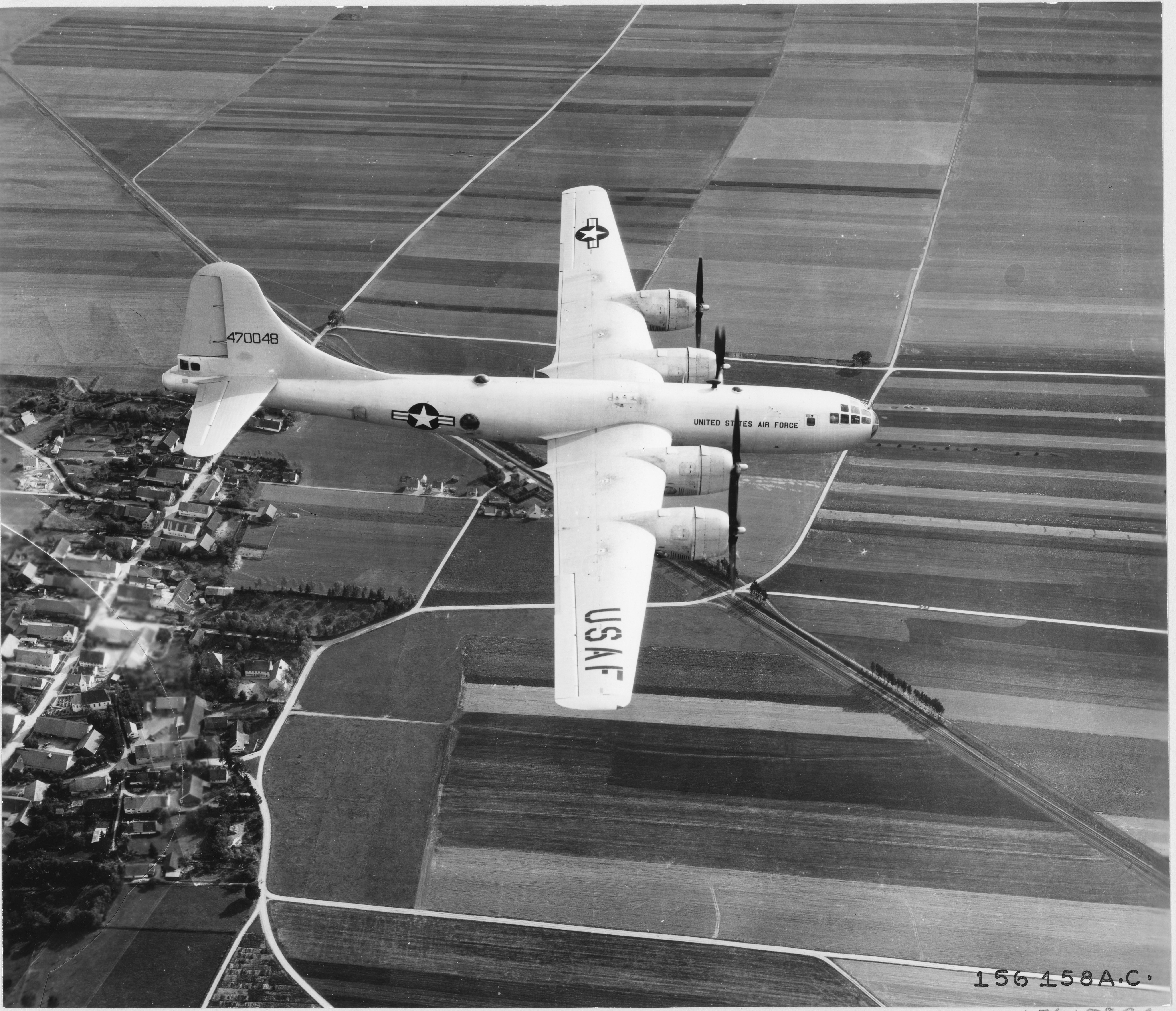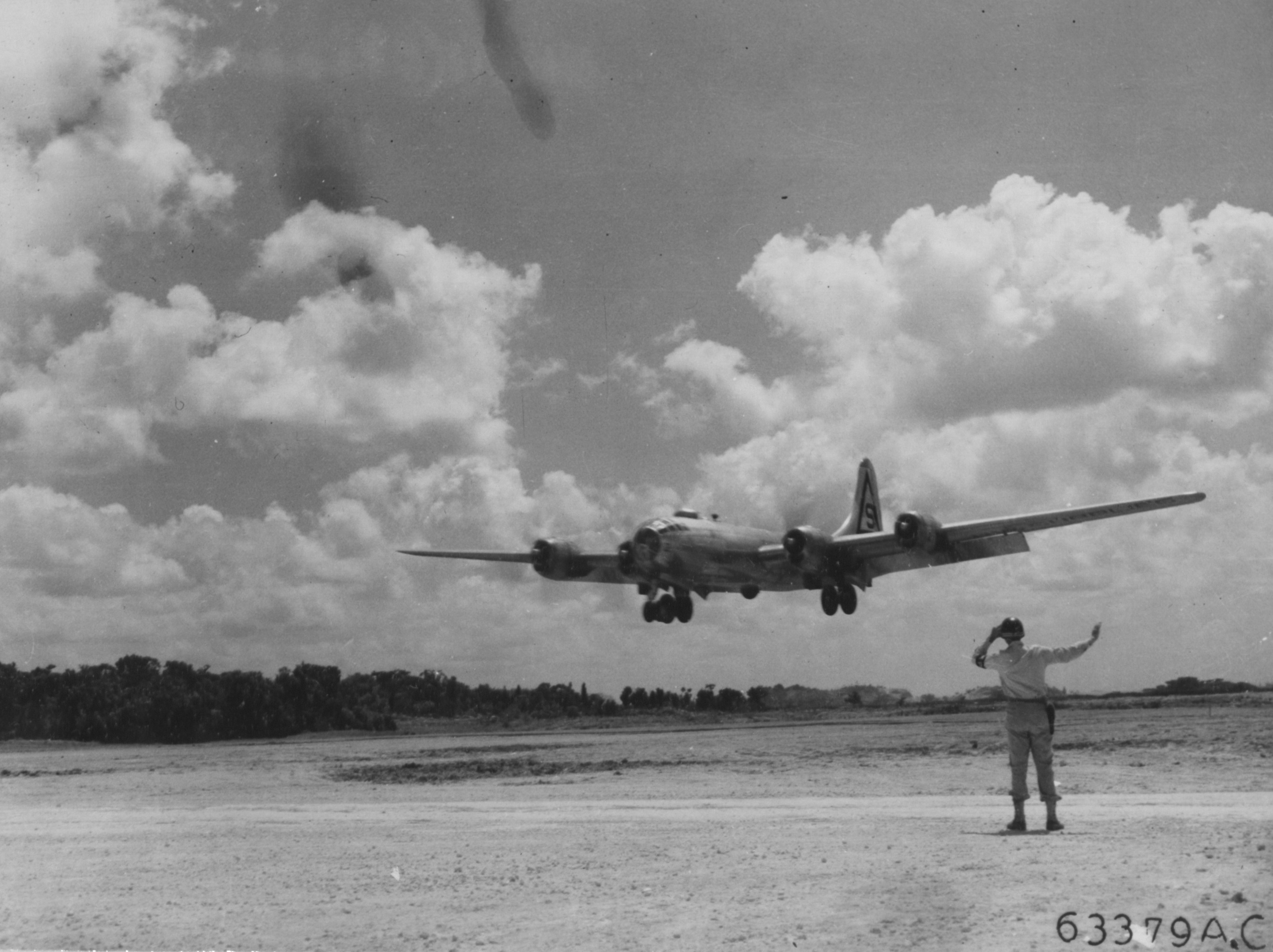What made the B-29 Superfortress such an important aircraft during World War II?
Military
11 January 2021
The role of strategic bombing in war was heavily emphasized by airpower theorists during the time between the First World War and WWII. People such as Giulio Douhet and Billy Mitchell, observing how aviation was used during the First World War, were convinced that aircraft would be critical in future wars. Douhet asserted that civilian morale was fragile, and that bombings would make any country want to surrender almost immediately. He also insisted that heavy bombers would almost always be able to punch through enemy air defenses. Mitchell emphasized the necessity of using bombs to target enemy industry, particularly aircraft production plants.
Many predictions of airpower theorists turned out to be wrong, but the armies of World War II kept in principle with the emphasis of heavy bombers. The B-17 and B-24 served that purpose primarily in Europe, the pacific needed more. The B-29 Superfortress was a heavier, more powerful, and longer-flying beast of engineering beauty that ended up being a critical and worthy return on a risky investment by the US. As mass production began before testing was complete, the US Army Air Forces were hoping that the aircraft had no major design flaws and that it could be used immediately.
| Technical Specifications | |
|---|---|
| First flight | 21 September 1942 |
| Entered service | 1944 |
| Model no. | 345 |
| Wingspan | 141'-3" |
| Length | 99' |
| Gross weight | 105,000 lbs |
| Bomb load | 20,000 lbs |
| Top speed | 365 mph/587 kph |
| Max range | 5830 mi/9380 km |
| Combat range | 1600 mi/2600 km |
| Service ceiling | 31850 ft |
| Engines | 4×Wright R-3350 Duplex-Cyclone 2200 hp each |
| Crew | 10 |
| Armament | 12×.50 machine guns; 1×20mm cannon |
1. A B-29 in flight, seen from the side. 2. A Pilot's view of Mount Fuji in Japan, through the nose of a B-29. 3. A B-29 landing at Kadena, Japan. Images via US National Archives.
One of the primary factors barring the effectiveness of bombers was their lack of accurate navigation and targeting systems. In order for a bombing to do the most damage, the bombs need to hit where you intend them to. The B-29 improved on this issue by implementing its own stand-alone systems. The B-29 was almost twice as heavy as the B-17, and its maximum range was over 2,000 miles more. The B-29 features better gunnery, well increased bomb loads, and a pressurized cabin. It could also fly much faster than the B-17.
These features made the B-29 important in the Pacific, where aircraft needed to fly very long distances to reach Japan, with few Allied bases within combat range. In fact, the role of the B-29 was almost exclusively aimed towards Japan. The B-29 was used extensively in bombing Tokyo, where they were able to wreak havoc on Tokyo's industry with minimal losses. Their strategy of using B-29s with explosive incendiary bombs was expanded throughout Japan. On March 9, 1945, 330 B-29s bombed Tokyo in what turned out to be the deadliest air raid of WWII.
On August 6th and August 9th, 1945, modified B-29s Enola Gay and Bockscar dropped atomic bombs on the Japanese cities of Hiroshima and Nagasaki, eventually leading to the surrender of the Japanese. The airplanes were modified such that they would operate with a minimal crew, and much of their defensive armaments were removed to save weight.
Overall, the B-29 was a technological leap forward in heavy bombers, with numerous performance and load improvements. It was a crucial factor in the Pacific, considering its range and speed. Combined with incendiary bombs and atomic weapons, the B-29 was able to do substantial damage to the Japanese at the end of the Second World War.
A flight training video produced by the USAAF in 1944 for B-29 crew.
A film narrated by Ronald Reagan about B-29 bombings in Tokyo
References
- "B-29 Diamond Lil". Commemorative Air Froce. https://commemorativeairforce.org/aircraft/3
- "B-29 Superfortress." The Science News-Letter 45, no. 26 (1944): 403. doi:10.2307/3920891.
- Biddle, Tami Davis. AIR POWER AND WARFARE: A CENTURY OF THEORY AND HISTORY. Report. Strategic Studies Institute, US Army War College, 2019. Accessed January 11, 2021. doi:10.2307/resrep20093.
- Drew, Dennis M. Recapitalizing the Air Force Intellect: Essays on War, Airpower, and Military Education. Report. Air University Press, 2008. 171-90. http://www.jstor.org/stable/resrep13918.25.
- Ennels, Jerome A., Robert B. Kane, and Silvano A. Wueschner. Cradle of Airpower: An Illustrated History of Maxwell Air Force Base 1918–2018. Report. Air University Press, 2018. 51-68. doi:10.2307/resrep19553.11.
- Francis, E. Taylor. A House Built on Sand: Air Supremacy in US Air Force History, Theory, and Doctrine. Report. Air University Press, 2020. 13-19. doi:10.2307/resrep24881.8.
- Hendrix, Jerry, and James Price. HIGHER, HEAVIER, FARTHER, AND NOW UNDETECTABLE?: BOMBERS: LONG-RANGE FORCE PROJECTION IN THE 21ST CENTURY. Report. Center for a New American Security, 2017. 15-37. http://www.jstor.org/stable/resrep06400.5.
- "Historical Snapshot: B-17 Flying Fortress". The Boeing Company. https://www.boeing.com/history/products/b-17-flying-fortress.page
- "Historical Snapshot: B-29 Superfortress". The Boeing Company. https://www.boeing.com/history/products/b-29-superfortress.page
- Long, Tony. "March 9, 1945: Burning the Heart Out of the Enemy". WIRED, 2011. https://www.wired.com/2011/03/0309incendiary-bombs-kill-100000-tokyo/
- "Wright R-3350-57 Cyclone". National Museum of the United States Air Force, 2015. https://www.nationalmuseum.af.mil/Visit/Museum-Exhibits/Fact-Sheets/Display/Article/195705/wright-r-3350-57-cyclone/
Further Reading
- Close, Winton R. "B-29s in the CBI — A Pilot's Account." Aerospace Historian 30, no. 1 (1983): 6-14. http://www.jstor.org/stable/44523777.
- Douhet, Giulio. The Command of the Air. Washington: Office of Air Force History, 1983.
- Haulman, Daniel L. "Fighter Escorts for Bombers: Defensive or Offensive Weapons." Air Power History 66, no. 1 (2019): 39-44. https://www.jstor.org/stable/26652285.
- Jing, Yang. "The Unforgettable B-29s: A Tribute." Air Power History 53, no. 1 (2006): 22-27. http://www.jstor.org/stable/26274721.
- Lange, Katie. "The Enola Gay's History Lives On". US Dept. of Defense, 2020. https://www.defense.gov/Explore/Inside-DOD/Blog/Article/2279986/the-enola-gays-history-lives-on/
- Mets, David R. A Companion for Aspirant Air Warriors: A Handbook for Personal Professional Study. Report. Air University Press, 2010. Accessed January 11, 2021. doi:10.2307/resrep19586.


